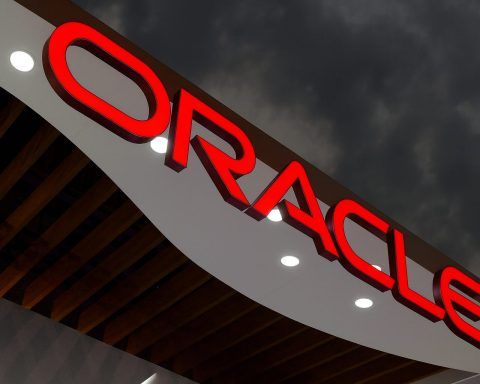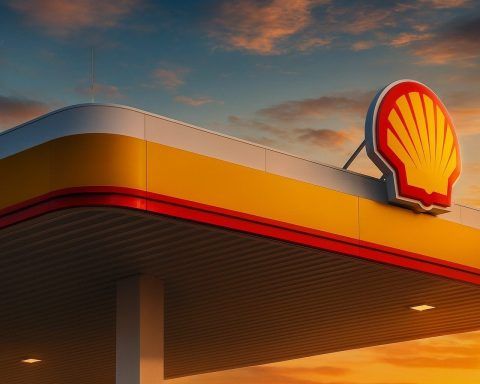- WTI/Brent levels: West Texas Intermediate (WTI) closed around $60.3 per barrel on Oct 31, 2025 (Brent at ~$64.9) [1], marking roughly a 3% drop for the month (the third straight monthly loss) [2].
- Record supply, soft demand: U.S. crude production hit a record ~13.6 million barrels/day [3], while OPEC+ continued to boost output (a new +137,000 bpd increase is expected for December) [4]. The IEA warns of an unprecedented ~4.0 million bpd global surplus by 2026 if trends persist [5].
- Gas prices fall: Lower crude has pushed U.S. gasoline near $3.06/gallon, the cheapest since early 2025 [6]. Analysts like GasBuddy’s Patrick De Haan say the national average is on the cusp of dipping below $3.00/gal [7].
- Major stocks resilient: Big oil stocks have largely held up. Exxon’s stock trades around $110–115 [8] and Chevron around $155 [9], despite lower oil. Occidental Petroleum (OXY) remains in the upper $40s (around $47–48) [10], buoyed by Berkshire Hathaway’s $9.7 billion purchase of its OxyChem unit [11] [12].
- Geopolitics & policy: US President Trump reached a one-year US–China truce, cutting China tariffs and arranging for resumed US energy exports – a partial de-escalation that has not yet fundamentally shifted demand prospects [13]. Meanwhile, Fed officials have signaled more rate cuts ahead (likely a 25 bp cut in the Nov. 1 meeting), a move seen as supportive for commodities demand [14] [15].
- Analyst outlook: Key forecasters are bearish. The U.S. Energy Information Administration projects Q4 2025 Brent at ~$62/barrel and just ~$52 in 2026 [16]. Bank of America and Macquarie warn Brent could fall below $50 if OPEC+ hikes continue or trade tensions worsen [17]. By contrast, ExxonMobil’s CEO Darren Woods argues today’s oversupply is “likely to be a short-term issue” as underinvestment eventually tightens markets [18].
- Middle East calm: Unlike past decades, Middle East conflicts have had surprisingly muted price impact. In June 2025 a brief Israel-Iran war sent Brent up only ~15% (to ~$81) before a ceasefire; prices swiftly retreated to pre-conflict levels [19] [20]. This reflects the market’s efficiency and diverse supply: traders say “it’s all about oil flows” [21], and indeed Iranian attacks so far have targeted US bases, not tankers [22].
- Refiner relief: Lower crude is easing pump prices and inflation. U.S. refiners are benefiting: Phillips 66 CEO Mark Lashier (Oct 29, 2025) noted strong refining margins on cheaper oil. At the same time, Gulf OPEC producers are adjusting – e.g. Saudi Aramco’s CEO said demand remains strong but the kingdom has cut its official December crude price to Asia to multi-month lows [23] [24].
Current U.S. Oil Prices
By late October 2025, U.S. benchmark oil prices were falling sharply. WTI crude for November delivery traded around $60–61/bbl (Brent near $64–65) on Oct. 30–31 [25] [26]. Both benchmarks slid ~1–2% in late Oct., erasing the summer’s gains. A strong dollar, rising OPEC+ output and abundant U.S. supply have outweighed positive demand signals [27] [28]. Notably, U.S. output reached record highs (about 13.6 M bpd by mid-late Oct.) [29], while API data showed large stock draws (crude down ~4.0M barrels for week ended Oct 24) [30]. Gasoline prices reflect the decline: the U.S. national average is near $3.06/gal and falling [31]. GasBuddy’s Patrick De Haan notes Americans are on “the cusp of seeing the national average drop below $3.00” [32] as refinery switches ease gasoline blending costs.
Stock Performance of Major U.S. Oil Firms
Oil majors’ stock prices have been more resilient than prices themselves. ExxonMobil (XOM) shares trade roughly in the $110–115 range [33], supported by its strong Q3 cash flows and diversified portfolio. Chevron (CVX) sits around $155 [34] – buoyed by its just-completed Hess deal (bringing record 4.1 MMboe/d production [35]) and robust refining profits [36]. Occidental Petroleum (OXY) remains lower (mid-$40s), but its stock has held up because of a big corporate move: TS2 reports that Oxy’s $9.7B sale of OxyChem to Berkshire Hathaway (announced Oct 2) has dramatically improved its balance sheet [37]. OXY closed around $47.7 on Oct 1 and only dipped slightly during late Sept [38]; analysts rate it a “Hold” to “Moderate Buy” with upside to ~$54 next year [39]. In comparison, ExxonMobil’s market cap (~$445 B) and Chevron’s (~$305 B) still dwarf Occidental’s (~$45 B) [40]. Some Wall Street bulls (e.g. BMO’s Phillip Jungwirth) highlight Exxon and Chevron’s strong cash flow and dividend yields (~3–4%), while Occidental’s focus is on deleveraging [41] [42].
Key October 2025 News & Developments
Late Oct. brought a mix of supply-side news and policy shifts. OPEC+ meeting: Sources say OPEC+ ministers will again add modest barrels – roughly +137,000 bpd for December [43] [44] – continuing their monthly output hikes. These added barrels already helped push oil to 5-month lows by Oct 20 [45] before U.S. sanctions talk. Russian sanctions: President Trump slapped sanctions on Russia’s top oil firms (Lukoil, Rosneft) in late Oct [46], briefly lifting prices. However, a U.S. waiver for Rosneft’s German unit was granted [47], and analysts (IEA’s Fatih Birol, Price Futures’ Phil Flynn) expect minimal long-term supply disruption thanks to OPEC+ spare capacity [48] [49]. US–China trade: At the Oct 30 summit, Trump agreed to cut some tariffs on China and resume U.S. energy exports (e.g. oil, LNG) to Beijing [50]. PVM’s Tamas Varga cautioned this was “more de-escalation than a structural change” [51]. Still, the détente eased a key demand risk, helping markets stabilize into month-end [52] [53]. U.S. Fed/Shutdown: With the U.S. government shutdown lingering, a Fed rate cut on Nov 1 was widely expected [54]. Fed cuts are seen as tailwinds – Rystad’s Claudio Galimberti notes lower rates “favor gradual reflation and support” for commodities like oil [55]. Earnings: Occidental reported a better-than-expected Q2 and aggressive debt paydown (debt trimmed to target) [56] [57]. Chevron beat Q3 profit forecasts (Oct 31 release) on higher production and refining margins [58] [59]. By contrast, European majors Shell and Total showed lower profits in Q3, reflecting the weaker oil environment [60].
Economic & Geopolitical Drivers
A confluence of factors has pressured oil. Supply glut: OPEC+ (led by Saudi/Russia) has reversed multi-year cuts since April, adding over 2.7 M bpd this year [61]. U.S. shale is pumping at peak levels (Permian/Gulf output surged) [62]. Global inventories are piling up – the IEA now forecasts a 4 MM bpd surplus in 2026 [63]. Demand concerns: High interest rates, a looming recession and U.S.–China trade jitters have dented demand growth. Goldman Sachs warns tariffs and weak data could shave 0.8 MM bpd off demand growth [64]. In Europe, weakness (e.g. stagnant German GDP) dampens oil use [65]. Geopolitics: Middle East tensions have diminished risk premiums. The June Israel–Iran conflict briefly lifted Brent to $81, but a ceasefire and Iran’s restraint (hitting US bases, not oil flows) quickly reversed gains [66] [67]. Yemen’s Houthi ceasefire and Gaza truce (mid-Jan) similarly removed a security premium, as traders note “it’s all about oil flows” [68]. Policy impacts: Trump’s pressure on OPEC and tariff threats loom over markets – any meeting of the President with OPEC’s Crown Prince in Nov could raise eyebrows (Trump historically pressed for lower prices [69]). Domestically, the near-record shale output and large EIA stock draws (Oct 24: −4.0 M barrels) underscore the U.S. supply surge [70].
Forecasts & Expert Outlook
Most forecasts now project lower prices ahead. The U.S. EIA (Oct) sees Brent averaging only ~$62 (Q4) and dropping to ~$52 by 2026 [71]. Bank of America concurs on year-end Brent (~$61) but warns Brent could sink below $50 if the trade war or OPEC+ hikes intensify [72]. UBS and Macquarie analysts talk of a potential “super glut” if current policies continue [73]. On the bullish side, Exxon’s Woods and Saudi Aramco’s CEO emphasize long-term needs: Woods says any oversupply is “short-term” and declines ~15%/yr if investment stalls [74], while Aramco’s boss noted persistent demand growth (Saudi budget now requires ~$80 oil, putting pressure on OPEC budgets) [75]. Others point out that ultra-low prices are rare: TS2 notes Americans now spend under 2% of income on gas (lowest in decades) [76] [77].
Sources: Data and quotes above are drawn from financial news and expert analysis (Reuters, Bloomberg, CNBC) and the TechStock² (TS2.tech) reports [78] [79] [80] [81] [82] [83] [84]. These include market data, company releases, and commentary from industry executives and analysts. All figures are as reported around Oct 31, 2025.
References
1. www.reuters.com, 2. www.reuters.com, 3. www.reuters.com, 4. www.reuters.com, 5. ts2.tech, 6. ts2.tech, 7. ts2.tech, 8. ts2.tech, 9. ts2.tech, 10. ts2.tech, 11. ts2.tech, 12. ts2.tech, 13. www.reuters.com, 14. www.reuters.com, 15. www.reuters.com, 16. ts2.tech, 17. ts2.tech, 18. www.reuters.com, 19. www.reuters.com, 20. www.reuters.com, 21. www.reuters.com, 22. www.reuters.com, 23. www.reuters.com, 24. www.reuters.com, 25. www.reuters.com, 26. www.reuters.com, 27. www.reuters.com, 28. www.reuters.com, 29. www.reuters.com, 30. www.reuters.com, 31. ts2.tech, 32. ts2.tech, 33. ts2.tech, 34. ts2.tech, 35. www.investing.com, 36. www.investing.com, 37. ts2.tech, 38. ts2.tech, 39. ts2.tech, 40. ts2.tech, 41. ts2.tech, 42. ts2.tech, 43. www.reuters.com, 44. www.reuters.com, 45. www.reuters.com, 46. www.reuters.com, 47. www.reuters.com, 48. www.reuters.com, 49. www.reuters.com, 50. www.reuters.com, 51. www.reuters.com, 52. www.reuters.com, 53. www.reuters.com, 54. www.reuters.com, 55. www.reuters.com, 56. ts2.tech, 57. ts2.tech, 58. www.investing.com, 59. www.investing.com, 60. www.reuters.com, 61. www.reuters.com, 62. www.reuters.com, 63. ts2.tech, 64. ts2.tech, 65. www.reuters.com, 66. www.reuters.com, 67. www.reuters.com, 68. www.reuters.com, 69. www.reuters.com, 70. www.reuters.com, 71. ts2.tech, 72. ts2.tech, 73. ts2.tech, 74. www.reuters.com, 75. www.reuters.com, 76. ts2.tech, 77. ts2.tech, 78. www.reuters.com, 79. ts2.tech, 80. www.reuters.com, 81. ts2.tech, 82. ts2.tech, 83. ts2.tech, 84. ts2.tech










